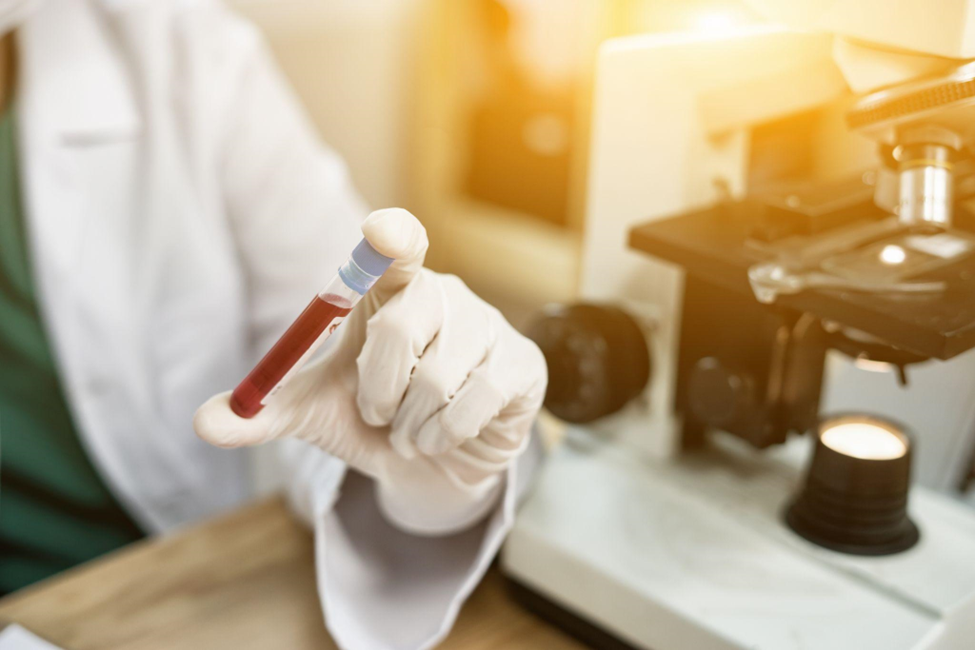
Iron-Deficiency Anemia: Risk Factors, Causes, Symptoms, and Dietary Solutions
Our bodies need iron in order to produce red blood cells.1 Low iron levels can result in iron-deficiency anemia.1 Learn about the symptoms, who is at risk for iron-deficiency anemia, and the effects diet can have on blood health and overall well-being below.
Understanding the Basics: What Is Iron-Deficiency Anemia?
There are many types of anemia, but iron-deficiency anemia is the most common.2 Iron-deficiency anemia develops when your body does not produce enough red blood cells due to a lack of iron.3
Hemoglobin is a part of red blood cells that binds to oxygen molecules and makes it possible to transport oxygen throughout our bodies.2 Iron is the ingredient the body needs to create hemoglobin.2 If there isn’t enough iron to make it, the cells in the body won’t be able to make the hemoglobin it needs for the body’s red blood cells.2 This can cause the symptoms of iron-deficiency anemia.3
Spotting the Signs: Common Iron-Deficiency Anemia Symptoms and Those at Risk
Iron-deficiency anemia has many symptoms. Some people may experience only one or two symptoms, while others may experience several. If the anemia is mild, there may be no symptoms. As the anemia progresses, symptoms may include:3
- Overall weakness or fatigue
- Dizziness or lightheadedness
- Shortness of breath
- Pica, a condition characterized by cravings for non-food items like ice
- Weak pulse
- Cold hands and feet
- Tachycardia (rapid heartbeat)
- Fainting
- Depression
- Enlarged and swollen tongue (glossitis)
- Pale skin
What are the causes of low iron in a person’s body? This type of anemia can be caused by decreased iron absorption, inadequate iron intake, or loss of iron from the body. These conditions can be caused by physical trauma, lifestyle choices, or certain medical conditions.1
Factors that lead to increased risk of developing iron deficiency include:
- Inadequate intake
- Young children between the ages of nine months and one year. Children of this age may not get enough iron in their diet as they transition to whole foods.1
- Adults who are 65 years of age and over. Older adults can develop nutrient absorption problems due to other conditions. They also may not be consuming enough iron-rich foods.4
- Loss of iron from blood loss
- Someone who has heavy menstrual periods.5
- Someone who donates blood frequently.5
- Lifestyle habits
- Those who engage in intense exercise, such as jogging.5
- Those on vegetarian diets who don’t eat iron-rich foods.5
- Medical conditions
- Those with gastrointestinal conditions like inflammatory bowel disease, which can prevent nutrient absorption.5
- Those with GI cancers.1
- Those with obesity.1
- Those who have had gastric bypass surgery.5
- Being pregnant or breastfeeding. Both of these involve the transfer of nutrients, including iron from mother to baby which can lead to deficiency.5
Diagnosis

Iron-deficiency anemia is typically diagnosed with a blood test that measures your complete blood count (CBC) as well as your hemoglobin, ferritin, and blood iron levels.1
Your doctor may require other tests as well, which can include a fecal occult blood test (which checks for hidden blood in stool) or testing of the gastrointestinal tract (e.g., upper and lower endoscopy).5 Women with abnormal menstruation may undergo a gynecologic evaluation.5
As treatment is dependent on the cause of iron deficiency, it is essential to correctly diagnose any physical disorders that might contribute to the condition.2 For instance, some cases of iron deficiency are caused by bleeding in the gastrointestinal tract, either from a disease (such as ulcerative colitis) or a reaction to certain medications (such as NSAIDs like ibuprofen).1,5 Other possible causes include kidney disease and bleeding during childbirth.1
In addition to addressing any underlying conditions, your medical provider may recommend dietary changes that increase the body’s iron levels.1 Let’s look at frequently recommended ways to help prevent iron deficiency.
Eating for Health: Iron-Rich Foods and Absorption Tips
The consumption of foods high in iron is a common and recommended way to correct iron-deficiency anemia.5
Good sources of iron include dark green leafy vegetables such as collard greens, broccoli, spinach, and kale.5 These and others can be enjoyed in stir-fries, smoothies, and a wide variety of other dishes. Poultry, pork, and beef liver, as well as shellfish, are all high in iron and can help restore iron levels.5
Grains, rice, pastas, and cereals enriched with iron are some common foods to help iron deficiency anemia.5 Certain beans and legumes contain high amounts of iron. These include pinto beans, peas, lima beans, and black-eyed peas, as well as tofu.5,6 Cashews are another good source of iron.6 Some dried fruits, such as raisins, apricots, and prunes, are also high in iron and can help correct an iron deficiency.7
Tips for Maximizing Your Iron Absorption
In addition to eating a diet for anemia, some vitamins help to increase the amount of iron you absorb. Vitamin C is known to improve iron absorption by storing it in a more easily absorbable form, so it’s a good idea to consume foods rich in vitamin C, such as strawberries, tomatoes, and oranges, with high-iron foods.1
If you don’t already consume iron-rich or vitamin-rich foods, including so many in your diet can seem like a daunting task. But one easy and delicious way to do this is to include them in a smoothie. Another strategy is to aim to “eat the rainbow” or consume as many colors of fruits and vegetables as possible in each day’s meals.
Inability to Absorb Iron
If you have been diagnosed with a condition that prevents you from being able to properly absorb iron (such as celiac disease), or you have undergone intestinal surgery, your body may struggle to break down the iron-rich foods in your diet.3
For people with conditions that prevent sufficient iron from being absorbed, a doctor may prescribe iron supplements. In some cases, you may require iron injections.3
Crystal Run: Iron-Deficiency Diagnosis and Comprehensive Treatment Approaches

The hematologists at Crystal Run Healthcare provide consultation and diagnosis of all types of anemia and treat iron-deficiency anemia with comprehensive, cutting-edge approaches. With several locations in New York, treatment is always close to home.
Sources:
- National Heart, Lung, and Blood Institute. Iron-Deficiency Anemia, Updated 3/24/2022. Iron-Deficiency Anemia | National Heart, Lung, and Blood Institute, Accessed 10/7/2024
- American Society of Hematology. Anemia. Anemia | American Society of Hematology, Accessed 10/7/2024
- MedlinePlus. Iron Deficiency Anemia, Updated 4/18/2023. Iron Deficiency Anemia | MedlinePlus, Accessed 10/7/2024
- American Society of Hematology. Anemia and Older Adults. Anemia and Older Adults | American Society of Hematology, Accessed 10/7/2024
- American Society of Hematology. Iron-Deficiency Anemia. Iron-Deficiency Anemia | American Society of Hematology, Accessed 10/7/2024
- Academy of Nutrition and Dietetics. Foods to Fight Iron Deficiency, Updated 8/3/2023. Foods to Fight Iron Deficiency | Academy of Nutrition and Dietetics, Accessed 10/7/2024
- American Red Cross. Iron Rich Foods. Iron Rich Foods | American Red Cross, Accessed 10/7/2024

 Optum Radiology at Crystal Run Healthcare
Optum Radiology at Crystal Run Healthcare Request medical records online
Request medical records online